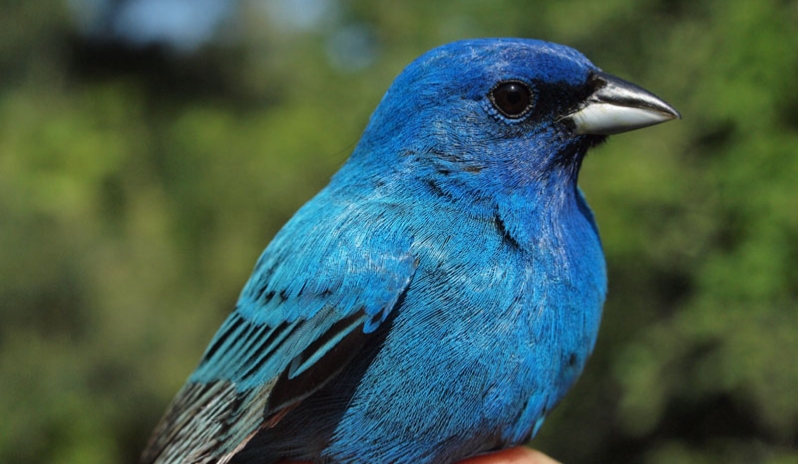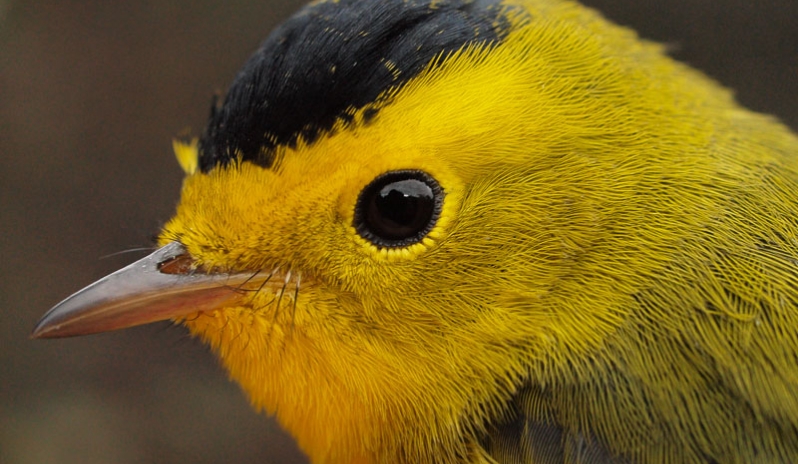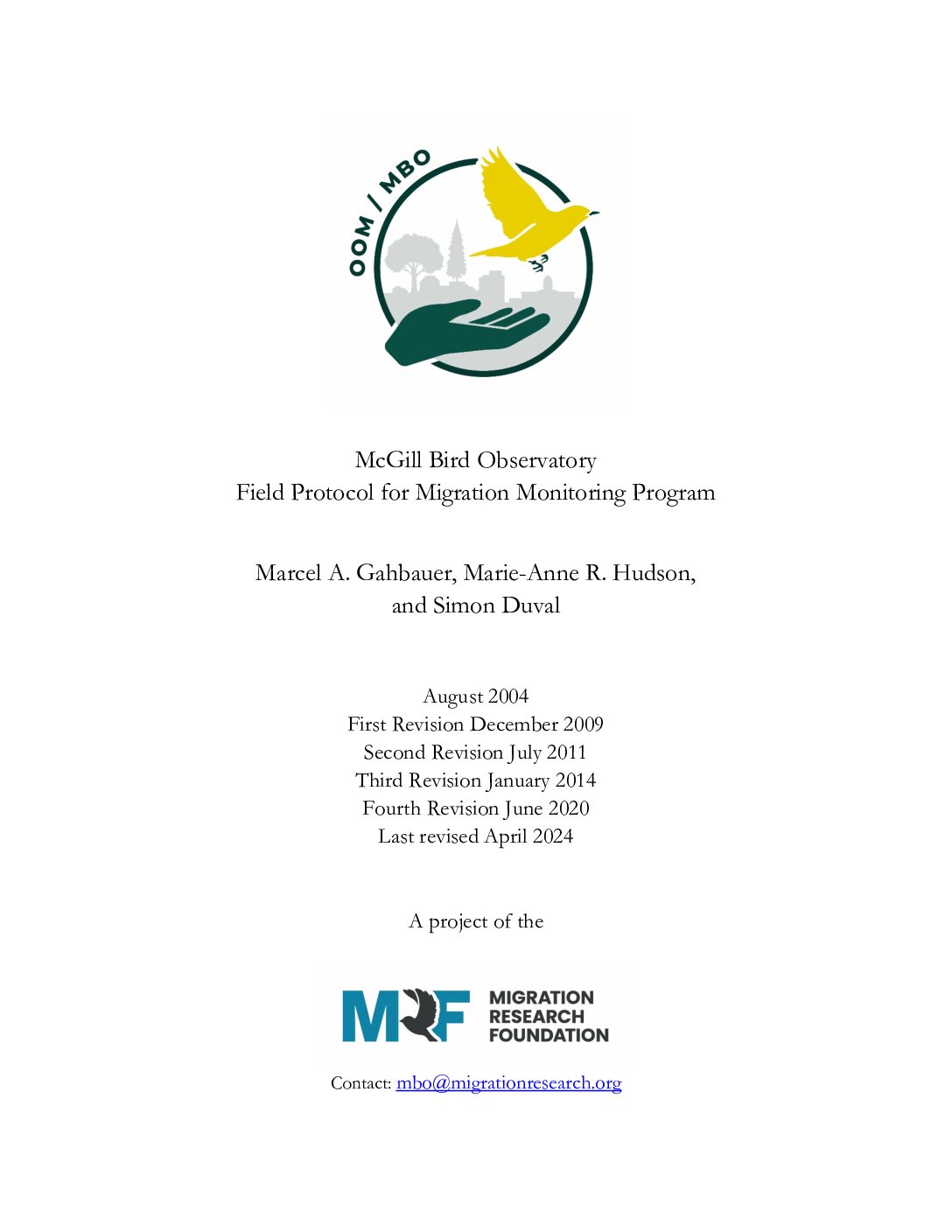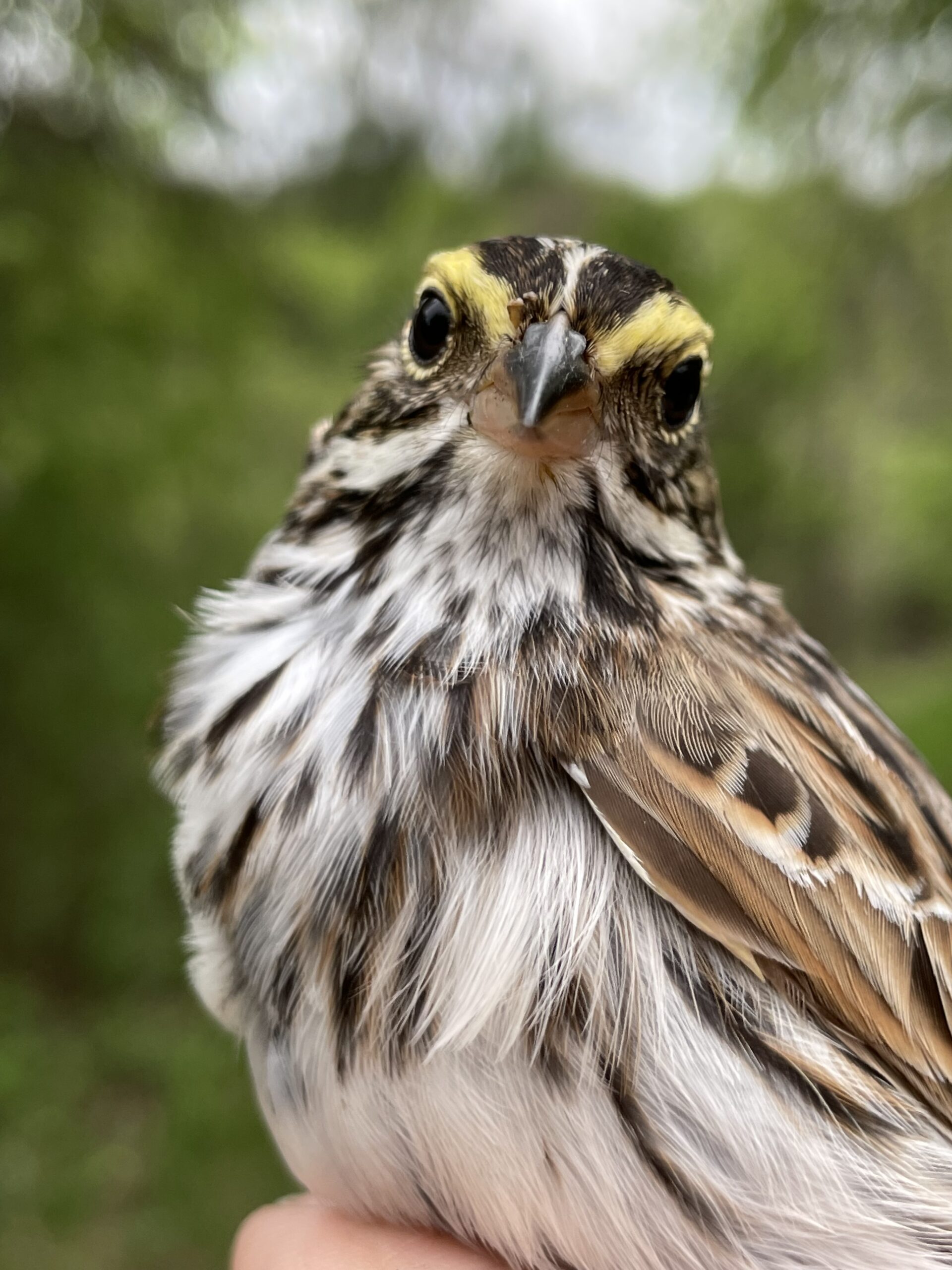
The Migration Monitoring Program is a long-term study conducted every spring and fall to track bird populations over time. It follows standardized methods in line with the Canadian Migration Monitoring Network to ensure consistency and reliability.
Each morning consists of 6 hours of general bird observations during which 5 hours of banding are done as well as a one-hour census walk. The data collected from these activities are combined to determine a standardized Daily Estimated Total (DET) for each species.
Program Objectives
The Migration Monitoring Program at McGill Bird Observatory collects data on neotropical migrants and other landbirds to support continent-wide efforts in tracking population changes. These data allow us to:
- Analyze trends in bird populations
- Track patterns in the proportion of juvenile migrants in fall
- Explore changes over time in migration arrival, departure, and stopover duration
- Collaborate with other observatories on broader research
- Examine changes in morphometric data
- Study the frequency and duration of molt migration
- and more!
Spring
Duration : 10 weeks
(March 28 – June 5)
Every spring, the Migration Monitoring Program (SMMP) documents the incredible northbound journey of migrating birds.
Each day, researchers and volunteers conduct a structured census, and record observations to monitor population trends and migration patterns. For 45 days from April 18 to June 1, birds are banded to gain additional knowledge about their abundance and condition.
Fall
Duration : 14 weeks
(August 1 – November 6)
The Fall Migration Monitoring Program (FMMP) covers the earliest neotropical migrants already heading south in mid-summer to the hardiest of northern birds that only reach MBO in late fall.
Daily throughout the season, researchers and volunteers conduct a structured census, carefully band birds, and record observations to track migration patterns and population trends.
Protocol
The Migration Monitoring Program aims to collect high-quality data on neotropical migrants and other landbird species using standardized, scientifically rigorous methods. This data contributes to continent-wide efforts to monitor population trends and assess long-term changes.
The written field protocol at MBO ensures consistency in methodology, allowing staff to maintain standardized procedures across seasons and years, regardless of personnel changes.
Results
Our data are used in various short- and long-term studies and trend analyses. Our principal partner for the trend analysis is Birds Canada, which processes and archives data for all Canadian Migration Monitoring Network members, and makes results available to other researchers through the NatureCounts website.
Banding total in 2024: 5683 birds of 85 species
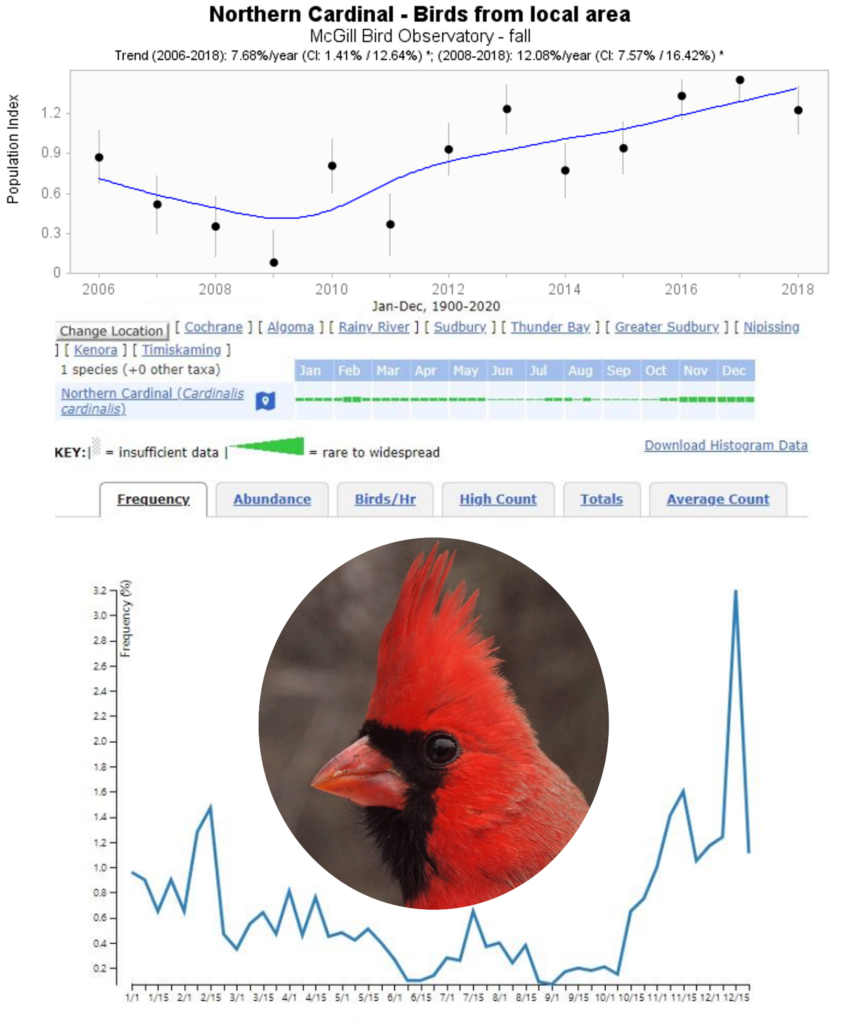
Program
Supporters
How you can help
Our research is made possible through the generous support of donors, volunteers, and partners. Your donations help keep the observatory running, allowing us to conduct vital studies on bird migration, stopover behaviors, and habitat conservation. Contributions directly fund research equipment, banding efforts, and outreach initiatives.
You can also support our work by volunteering, participating in community science projects, or simply spreading awareness about the importance of bird conservation. Every effort makes a difference in protecting migratory species and their habitats
